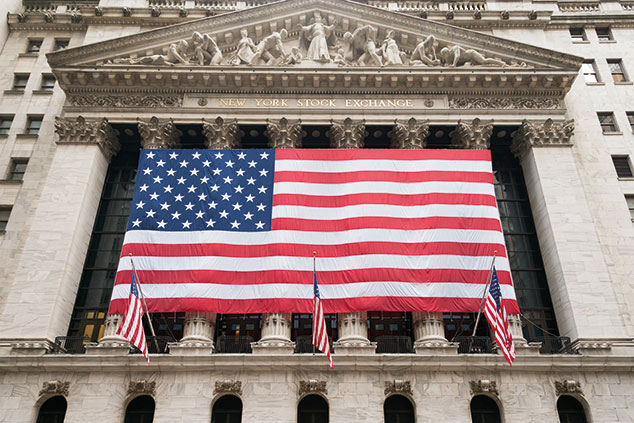
With Wall Street hitting new highs and even the FTSE 100 index back above 7,500, many investors will wish they had bought stocks six months ago. But what should you do now? Jump in and risk an autumn sell-off or stay on the sidelines expecting a slide? The market gives no clear answer other than the old Irish quip – “if I were you, I wouldn’t start from here”. Ed Yardeni, a strategist and economist, points out that the US economic expansion, now ten years old, is the longest on record.
No boom, so no bust
This leads many to assume that a recession is due. But Yardeni points out that the long expansion has also been one of the weakest on record, with GDP up just 25% in a decade. “There has been no boom and so no bust. Typically, booms set the stage for busts by generating speculative excesses financed by too much debt, resulting in either price or asset inflation. The Federal Reserve responds by raising interest rates, triggering a financial crisis, a credit crunch and a bust.” Today, there may be a record amount of corporate debt outstanding, but low interest rates keep it affordable.
The next recession “has been the most widely anticipated of all time, which may explain why it hasn’t happened. Meanwhile, we have the most widely hated bull market of all time.” Valued at 16.7 times prospective earnings, the US market looks a bit expensive, but the valuation is below the 18.6 times reached in early 2018. Earnings growth is expected to be less than 5% this year, but to be in double digits next.
Valuations in other markets are lower, but their economies and markets are less dynamic. The alternatives to equities are not attractive: with the yield on ten-year US government bonds at just 2%, in line with inflation, the real yield is zero. In other bond markets, yields are lower and real yields negative, as they are for bank deposits everywhere. It’s tempting to look for value in areas of the market that have been left behind, but such a strategy could prove too clever by half. Sticking to the global funds and leaving the asset allocation as well as the stock selection to their managers is a more cautious option.
These investment trusts were once UK-focused underperformers trading at substantial discounts to asset value, but that has mostly changed. Witan, Scottish Investment Trust and Bankers still have relatively high UK exposure, arguing that the UK market, dominated by international companies with limited exposure to the British economy, is highly international. But only Bankers (LSE: BNKR) has beaten the global index over three and five years. F&C (LSE: FCIT) and Alliance Trust (LSE: ATST) have significantly improved their performance, which has been in line with global indices over three and five years.
The star of the sector
The sector star, with twice the market return over three years, is the £8bn Scottish Mortgage Trust (LSE: SMT), but its concentrated portfolio of high-growth stocks should make you think twice against putting all your eggs in one basket. Its stablemate, the £2bn Monks Investment Trust (LSE: MNKS), has consistently outperformed by a lesser margin.
Two smaller trusts with assets of £200m-£250m are also worth a look: the Mid Wynd (LSE: MWY) trust and Martin Currie Global Portfolio Trust (LSE: MNP). The former has built up a strong record investing in “growth stocks at conservative valuations”. The performance of the latter has accelerated since a new manager, Zehrid Osmani, was appointed a year ago, but this could be a flash in the pan. It is one to keep an eye on.
There are no easy gains in sight, but the downside in equity markets looks limited and patience should be rewarded. Short term setbacks are always possible, but it’s better to be invested than trying to finesse the next correction.